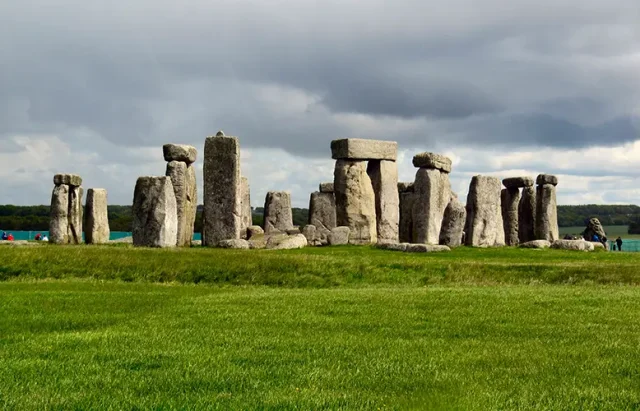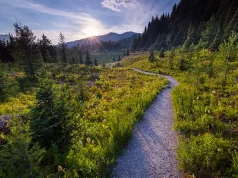
You don’t set out to become a pilgrim. You set out to escape—your job, your roommate, your inbox, your general sense of malaise that creeps in at about three o’clock every afternoon. You book the flight, you pack the wrong shoes, you tell yourself you’ll figure the rest out when you land. And then suddenly, in some place you only half-expected to end up, you find yourself at a temple, a ruin, a mountain, a circle of stones—and you feel something. You don’t have to call it spiritual if you hate that word. You can call it awe, or goosebumps, or even “the hair on my arms stood up.” But you know it when it happens. And if you’re curious where to start, there are places waiting for you, doorways into the mystical, maps you can follow that don’t require a PhD in anthropology, just a plane ticket and an open mind. For more guidance, you can always wander over to free-psychic.chat.
The Universal Itch for Somewhere Else
There’s a moment in every traveler’s life when you realize Paris won’t save you. Neither will Rome. Beautiful, yes. Delicious, certainly. But what you’re after isn’t in the croissant or the Colosseum. What you’re after is something bigger, quieter, older. A place where the air feels charged and the ground hums, where people before you have stood and asked the same impossible questions.
Mystical destinations have that pull. They’re less about what you see and more about what you feel. The guidebooks won’t tell you about the goosebumps, but they’ll tell you how to get there.
Stonehenge: The Tourist Trap That Still Works
You’ve heard it’s overrated. Too many buses, too many selfie sticks. And yes, Stonehenge is a parking lot away from feeling like Disneyland. But then you see it—those stones rising out of the Salisbury Plain—and you can’t help yourself. You feel small. You feel curious. You feel, against all logic, like maybe the druids knew something we don’t.
The trick is to go early, go late, or better yet, book a special access visit that lets you walk among the stones. When you stand there, hand almost grazing the rough surface, it’s impossible not to think about time, and history, and the fact that people four thousand years ago dragged these rocks across miles of countryside without a single moving truck.
Machu Picchu: The Postcard That’s Real
Here’s the thing about Machu Picchu: it’s exactly as spectacular as it looks in every picture. Which is annoying, because you want to be cynical. You want to believe it’s all hype. But then you step off the train, hike the last stretch, and there it is, mist curling around terraces carved into the mountain, llamas chewing indifferently in the background.
The mystical part isn’t just the view. It’s the realization that this city was built in alignment with the solstices, that every stone was placed with astronomical precision, that the Incas lived with a level of connection to the sky and earth that most of us only glimpse when we remember to look up from our phones.
Varanasi: Life, Death, and Everything In Between
You think you’re prepared. You’re not. Varanasi doesn’t ease you in; it engulfs you. The ghats along the Ganges are crowded with pilgrims bathing, priests chanting, fires burning. It’s messy, chaotic, overwhelming—and deeply, undeniably sacred.
You can watch a cremation ceremony and feel the fragility of life pressed right up against the eternity of ritual. You can wake before dawn, take a boat onto the river, and see the city come alive in golden light. It’s not always comfortable, but it’s unforgettable. Varanasi is a reminder that spirituality isn’t neat or polite—it’s raw, and human, and constant.
Sedona: The Vortex and the Skeptic
Sedona is one of those places where even skeptics get suspicious. The red rocks are gorgeous, yes, but there’s something else. The town is full of talk about “energy vortexes”—spots where the earth’s energy is supposedly amplified. You roll your eyes, you hike to one anyway, and then suddenly you feel…something. Warmth? Calm? A buzz? Maybe it’s the altitude. Maybe it’s the power of suggestion. Maybe it’s real.
Either way, Sedona has built an entire identity around the mystical. Crystal shops, aura readings, meditation workshops. You don’t have to buy into all of it. You just have to let yourself be open. Sometimes belief isn’t the point—experience is.
Kyoto: Where Every Garden Is a Prayer
Japan does subtlety better than anyone. In Kyoto, you can wander through temple gardens where every stone, every patch of moss, every ripple in the sand has been placed with intention. You think you’re just looking at rocks until you realize you’ve been sitting in silence for twenty minutes, staring at nothing, and you feel oddly at peace.
The mysticism here isn’t loud. It doesn’t demand. It whispers. It reminds you that spirituality can be quiet, that sometimes the most sacred journeys are the ones that ask you to sit still.
Uluru: The Rock That Owns the Horizon
In Australia’s Red Centre, Uluru rises like a giant heartbeat in the desert. Sacred to the Anangu people for tens of thousands of years, it radiates a presence that’s hard to put into words. You can’t climb it anymore (thankfully), but you can walk around its base, hear the stories passed down through generations, watch the colors shift from orange to red to purple as the sun sets.
Uluru is a reminder that spirituality is rooted in place, in history, in connection. You don’t just visit—you listen.
Why You Go
You don’t have to believe in energy fields, or past lives, or divine intervention to find value in sacred sites. You just have to show up. The point isn’t to walk away enlightened. The point is to walk away having felt something—curiosity, awe, humility, wonder.
Travel can be about distraction. It can be about cocktails and Instagram. But it can also be about putting yourself in the path of mystery, about letting yourself be surprised by what lingers after you leave.
How to Travel Mystically Without Losing Your Luggage
Here’s the practical part. Sacred doesn’t mean convenient. These journeys still involve airport delays, questionable bathrooms, and at least one missed bus. You’ll pack the wrong shoes. You’ll forget sunscreen. You’ll eat something you regret. And yet, somehow, the discomfort becomes part of the story.
Bring a journal. Take fewer photos. Pay attention. Don’t rush. Let the place work on you, even if you don’t believe places can work on you.
Closing the Circle
When you come home, people will ask how it was. You’ll say it was beautiful, or strange, or “hard to describe.” And that will be true. Because how do you explain standing in front of a stone circle, or a mountain city, or a river where life and death dance side by side?
You don’t. You keep it. You carry it. You let it change the way you look at the ordinary. Because that’s the secret of mystical destinations—they remind you that the sacred isn’t always elsewhere. Sometimes, once you’ve seen it, you start to notice it everywhere.





